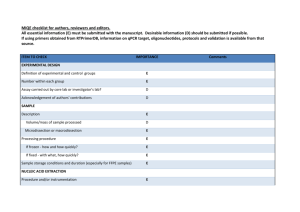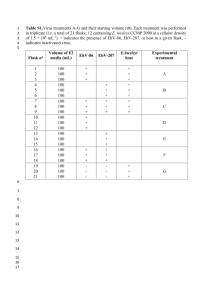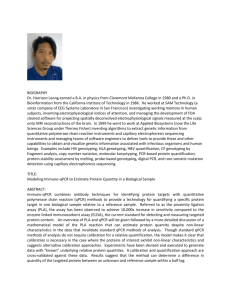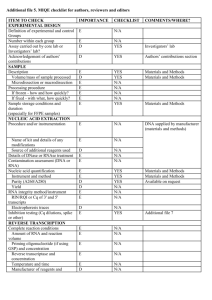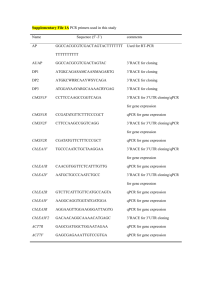a quantitative real-time pcr assay for the identification and
advertisement
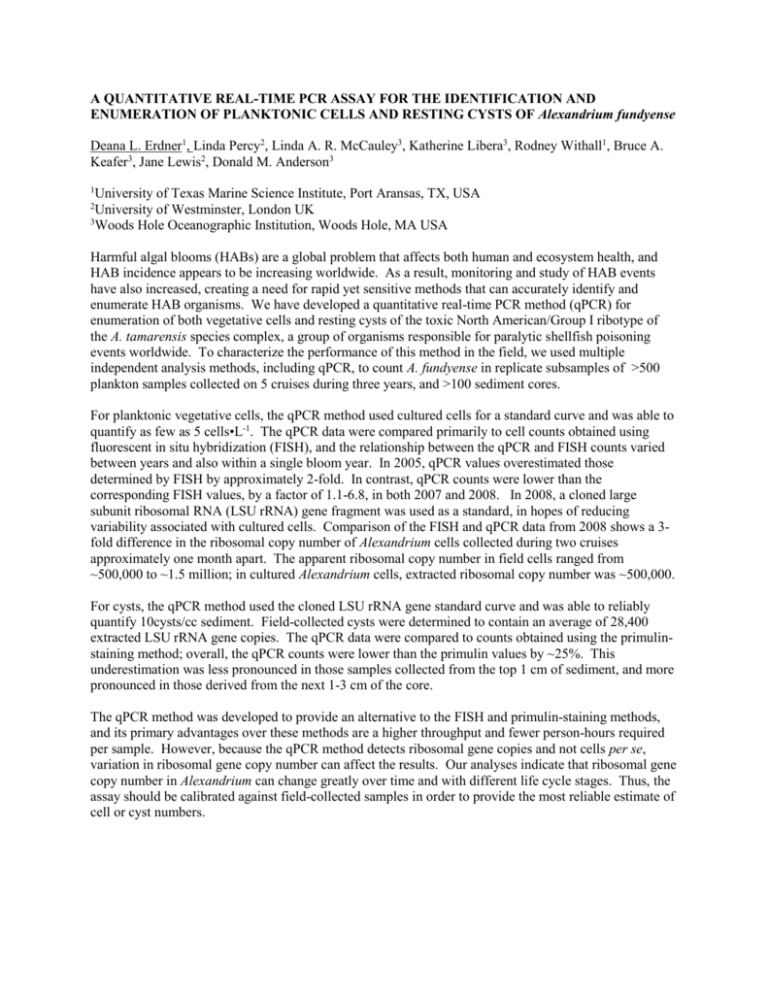
A QUANTITATIVE REAL-TIME PCR ASSAY FOR THE IDENTIFICATION AND ENUMERATION OF PLANKTONIC CELLS AND RESTING CYSTS OF Alexandrium fundyense Deana L. Erdner1, Linda Percy2, Linda A. R. McCauley3, Katherine Libera3, Rodney Withall1, Bruce A. Keafer3, Jane Lewis2, Donald M. Anderson3 1 University of Texas Marine Science Institute, Port Aransas, TX, USA University of Westminster, London UK 3 Woods Hole Oceanographic Institution, Woods Hole, MA USA 2 Harmful algal blooms (HABs) are a global problem that affects both human and ecosystem health, and HAB incidence appears to be increasing worldwide. As a result, monitoring and study of HAB events have also increased, creating a need for rapid yet sensitive methods that can accurately identify and enumerate HAB organisms. We have developed a quantitative real-time PCR method (qPCR) for enumeration of both vegetative cells and resting cysts of the toxic North American/Group I ribotype of the A. tamarensis species complex, a group of organisms responsible for paralytic shellfish poisoning events worldwide. To characterize the performance of this method in the field, we used multiple independent analysis methods, including qPCR, to count A. fundyense in replicate subsamples of >500 plankton samples collected on 5 cruises during three years, and >100 sediment cores. For planktonic vegetative cells, the qPCR method used cultured cells for a standard curve and was able to quantify as few as 5 cells•L-1. The qPCR data were compared primarily to cell counts obtained using fluorescent in situ hybridization (FISH), and the relationship between the qPCR and FISH counts varied between years and also within a single bloom year. In 2005, qPCR values overestimated those determined by FISH by approximately 2-fold. In contrast, qPCR counts were lower than the corresponding FISH values, by a factor of 1.1-6.8, in both 2007 and 2008. In 2008, a cloned large subunit ribosomal RNA (LSU rRNA) gene fragment was used as a standard, in hopes of reducing variability associated with cultured cells. Comparison of the FISH and qPCR data from 2008 shows a 3fold difference in the ribosomal copy number of Alexandrium cells collected during two cruises approximately one month apart. The apparent ribosomal copy number in field cells ranged from ~500,000 to ~1.5 million; in cultured Alexandrium cells, extracted ribosomal copy number was ~500,000. For cysts, the qPCR method used the cloned LSU rRNA gene standard curve and was able to reliably quantify 10cysts/cc sediment. Field-collected cysts were determined to contain an average of 28,400 extracted LSU rRNA gene copies. The qPCR data were compared to counts obtained using the primulinstaining method; overall, the qPCR counts were lower than the primulin values by ~25%. This underestimation was less pronounced in those samples collected from the top 1 cm of sediment, and more pronounced in those derived from the next 1-3 cm of the core. The qPCR method was developed to provide an alternative to the FISH and primulin-staining methods, and its primary advantages over these methods are a higher throughput and fewer person-hours required per sample. However, because the qPCR method detects ribosomal gene copies and not cells per se, variation in ribosomal gene copy number can affect the results. Our analyses indicate that ribosomal gene copy number in Alexandrium can change greatly over time and with different life cycle stages. Thus, the assay should be calibrated against field-collected samples in order to provide the most reliable estimate of cell or cyst numbers.


